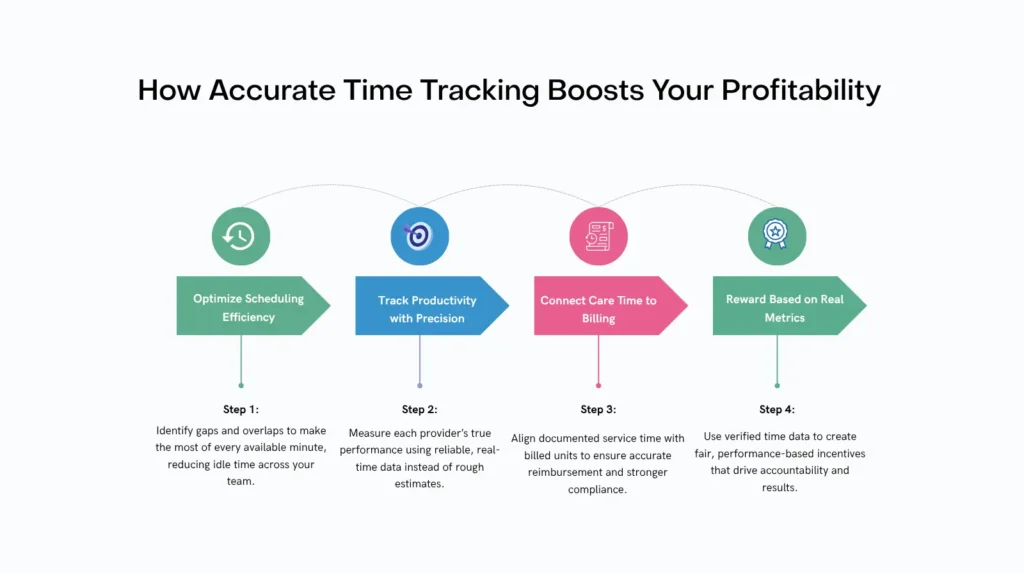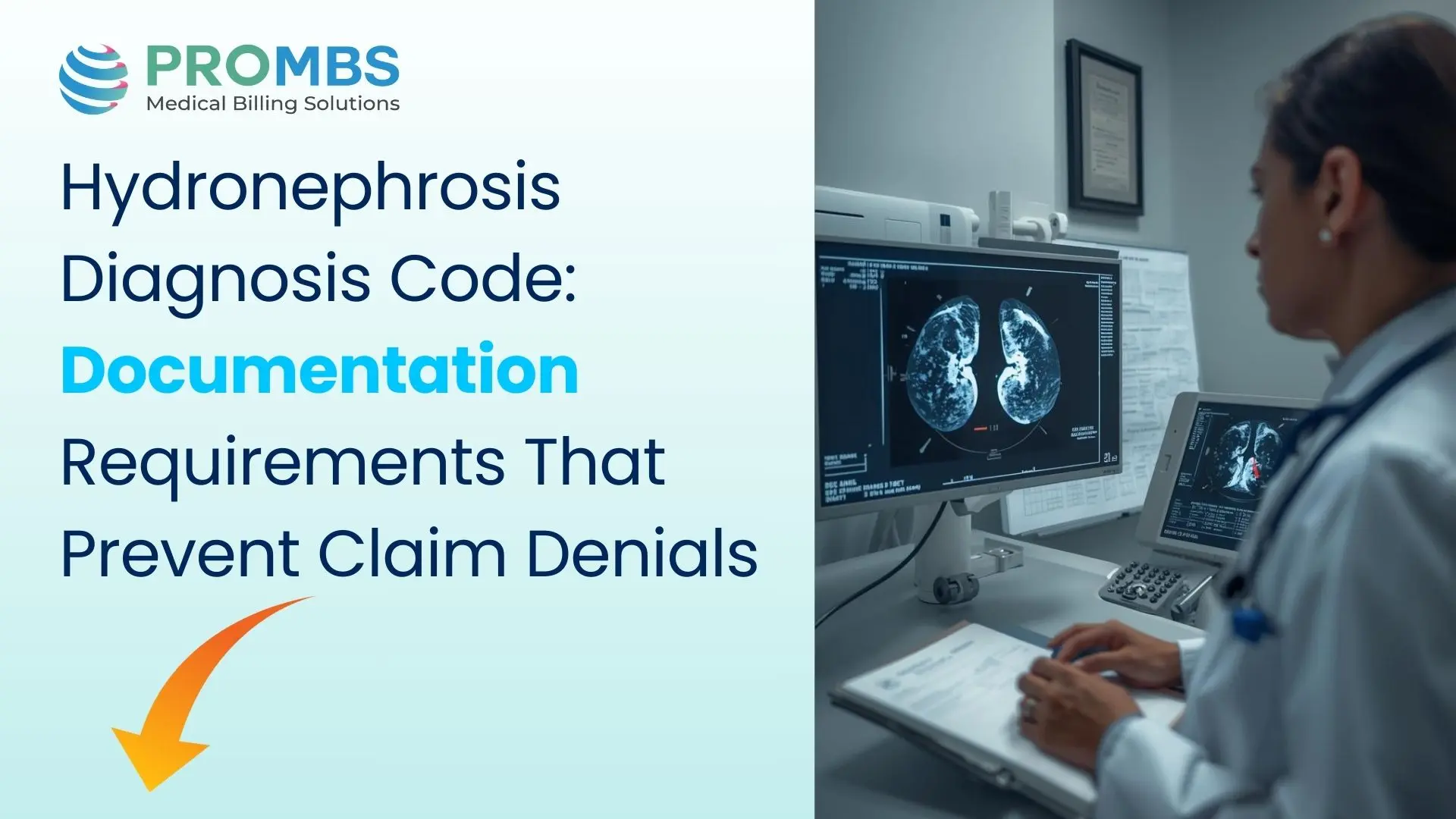The Financial Benefits of Accurate Time Tracking in Physical Therapy
Accurate time tracking in physical therapy is one of the easiest ways to protect your revenue without adding more work. Every minute of treatment has financial value, and when time is not recorded correctly, money slips away.
It is surprising how small timing errors like starting late or rounding down can create major financial gaps. Across multiple providers, even a few missed minutes per session can result in thousands of dollars lost each month. For billing teams and administrators, those small inconsistencies also create red flags for payers and potential audit triggers.
So, why does time tracking matter so much, and how can hospitals, clinics, and billing teams make it more accurate? The answer goes far beyond basic recordkeeping. In today’s healthcare environment, time is directly tied to both revenue and regulatory compliance. Every treatment minute you record supports the financial and clinical story behind each patient encounter. When those minutes are missed or miscalculated, it creates gaps that affect reimbursement, reporting accuracy, and even compliance standing.
Why Is Time Tracking a Financial Issue in Physical Therapy?
Most healthcare professionals think of time tracking as an administrative task, something you do at the end of a session before moving on to the next patient. But in reality, especially in physical therapy and other time-based services, it plays a much bigger role. Time tracking is directly tied to how your organization gets paid. Every treatment minute determines how many billing units can be submitted for reimbursement.
In physical therapy, these billing units are based on timed CPT codes, each one representing a 15-minute block of skilled, one-on-one care provided to the patient. The American Medical Association (AMA) developed and maintains these CPT codes to create a consistent standard across all healthcare providers. When you think about it, accurate time tracking is not just paperwork, it is the bridge between clinical work and financial results. Without precise timing, even excellent care can lead to underpayment, denied claims, or compliance issues that slow the entire revenue cycle.
Here is the catch: Centers for Medicare & Medicaid Services (CMS) requires that documentation clearly supports the number of billed units. If a therapist forgets to log time accurately or rounds incorrectly, claims may be underbilled or denied. This is where accurate time tracking in physical therapy becomes essential. Without it, even small gaps in documentation can lead to significant revenue loss over time. If your team lost just one billing unit a day per provider, how much revenue would your practice lose over a year? Probably more than you would expect. That is why every minute truly counts.
How Does Time Tracking Affect Reimbursement Accuracy?
Every service you bill, whether it is 97110 (Therapeutic Exercise) or 97140 (Manual Therapy), depends on how long that service was provided. The CMS 8-Minute Rule determines how those minutes translate into billable units. If you deliver 8 to 22 minutes of treatment, you can bill one unit. Miss a few minutes, and you lose a billable service.
Minutes-to-Units Conversion Table
| Minutes of Timed Therapy | Billable Units |
|---|---|
| 8–22 minutes | 1 unit |
| 23–37 minutes | 2 units |
| 38–52 minutes | 3 units |
| 53–67 minutes | 4 units |
This standard comes from the CMS Medicare Benefit Policy Manual, which explains how treatment time converts into billing units. Following this method helps your billing match your actual care time with confidence and consistency. It is worth asking, how often do your providers document start and stop times? If the answer is “not consistently,” that is where revenue is leaking.
Did You Know?
According to the American Physical Therapy Association (APTA) 2024 Practice Performance Report, even a 5% documentation or time-entry error rate can cause an average clinic to lose $20,000–$40,000 annually in missed or denied claims. Most of these losses come from small time-tracking or coding mistakes that could easily be avoided with automated EMR systems and consistent documentation audits.
What Happens When Time Tracking Is Inaccurate?
A Small Oversight That Leads to Big Revenue Loss
Here is a simple but realistic scenario. A physical therapist finishes a busy morning of back-to-back patients and forgets to record five minutes from one of the sessions. It doesn’t seem like much in the moment. After all, what difference could five minutes make? But that small oversight equals one full billing unit, worth about $35. Multiply that by 20 workdays, and you are looking at roughly $700 in lost revenue for that single therapist. Stretch it across an entire year, and the total climbs to more than $8,000.
How Small Mistakes Multiply Across a Team
Now picture a team of five therapists working in a single practice. If each of them makes the same small mistake every day, the combined loss adds up to around $40,000 a year. That is money the practice has already earned but never billed for, simply because of inconsistent time recording. Over time, these small, unnoticed errors quietly erode the financial stability of a clinic, making accurate time tracking one of the most important habits for any healthcare team to master.
Why Accuracy Protects Both Revenue and Compliance
On top of lost income, inaccurate logs can cause serious compliance problems. CMS audit guidance explains that mismatched EMR timestamps and billed units can lead to overpayment requests or claim denials. This is why accurate time tracking in physical therapy is so important. When logs are consistent and precise, clinics protect both their revenue and their compliance standing. Accurate documentation ensures that billing and clinical records align perfectly, which is exactly what payers and auditors expect to see during a review.
How Does Accurate Time Tracking Improve Profitability?
Better time tracking does not just prevent loss, it boosts profitability. When every session is recorded correctly, claims are cleaner, payments come faster, and denials go down. According to the American Physical Therapy Association (APTA), consistent documentation improves cash flow and staff productivity.

Have you ever noticed that some therapists always seem to have full schedules yet consistently bill fewer units than others? It can be confusing at first glance because it looks like they are working harder but producing less revenue. In most cases, the problem is not productivity at all, it is documentation. Small delays in recording session times, rounding minutes incorrectly, or forgetting to include portions of direct treatment can make a busy therapist appear less efficient on paper. Once these timing and documentation habits are corrected, the numbers usually tell a different story. Fixing time-tracking gaps often leads to an immediate boost in billed units and overall revenue without adding a single new patient to the schedule.
What Is the Best Way to Track Time in Modern Healthcare Settings?
Manual time logs no longer keep up with the pace of modern healthcare. In settings where providers treat patients back-to-back and every detail must be documented correctly, relying on handwritten notes or memory is risky. Automation has become the smarter and more reliable choice. Most electronic medical record (EMR) systems now include advanced time-tracking tools that automatically record the start and end of each treatment session. These features eliminate guesswork, prevent missed entries, and create an accurate record of each patient’s care duration. For hospitals, outpatient clinics, and therapy practices, adopting accurate time tracking in physical therapy through automation saves valuable time, reduces billing errors, and ensures every minute of care is properly documented and reimbursed.
Look for features like:
- Automatic timers that begin when a session starts.
- Overlap alerts to prevent double-booked minutes.
- Real-time dashboards for performance visibility.
- Audit-ready reporting that aligns with payer standards.
These systems meet HIPAA and CMS requirements while reducing manual entry errors. For busy hospitals and multi-provider clinics, automation ensures the billed time always matches the care delivered. If you have ever wondered, how can I prove exactly how long a therapist spent with a patient? These tools give you that answer instantly.
How Does Time Tracking Support Compliance and Audit Readiness?
Maintaining compliance in healthcare is about more than following rules; it requires clear, consistent, and well-documented records that prove every billed minute of care was necessary and provided as reported. Time tracking plays a major role in meeting these expectations and keeping audit risks low. The following points show how accurate time tracking strengthens compliance, simplifies audits, and safeguards your organization’s reputation.
Accurate Time Tracking Builds a Strong Foundation for Compliance
Accurate time tracking is one of the most reliable ways to maintain compliance in any healthcare organization. Every billed minute must be backed by clear documentation that proves what care was provided, when it occurred, and how long it lasted. Without that level of accuracy, even honest mistakes can raise red flags during payer reviews or compliance audits. According to Centers for Medicare & Medicaid Services (CMS) supervision and documentation requirements, therapists are expected to record the total treatment time delivered under the approved plan of care. These records show that services were medically necessary and provided within professional and regulatory standards.
Detailed Time Logs Simplify the Audit Process
Accurate Time Tracking Protects Revenue and Reputation
Think of accurate time tracking as more than just compliance, it is your safety net. It protects your organization from unnecessary financial and legal risk while giving administrators peace of mind that every claim can stand up to payer scrutiny. When time, documentation, and billing align perfectly, compliance becomes a natural outcome rather than a constant concern.
What Kind of ROI Can Accurate Time Tracking Deliver?
Here is a real example. A mid-sized practice with five therapists improved its time-tracking accuracy by just 10 percent. That small improvement recovered around $3,000 per month in missed billing units. Over a year, that is $36,000 in added revenue without extra patients. For larger hospitals or outpatient centers, the results can be even greater. Better accuracy also means fewer denied claims and less time fixing documentation errors.
Track key metrics like:
- Minutes billed per provider per day
- Denial rates from time documentation issues
- Average revenue per session
The APTA Private Practice Section encourages clinics and therapy providers to regularly track these key performance indicators to better understand how accurate time tracking improves financial performance. By reviewing these metrics consistently, practices can identify trends, reduce billing errors, and measure the true impact of precise documentation on their overall revenue.
How Can Clinics and Hospitals Improve Time Tracking Practices?
Improving time accuracy begins with setting up clear processes and building a sense of accountability across your team. Whether you oversee a busy therapy department, an outpatient clinic, or a billing office, even small and consistent adjustments can create meaningful results. When everyone understands how accurate time tracking in physical therapy impacts both revenue and compliance, it becomes part of the normal workflow instead of feeling like an extra task. Over time, this shared awareness helps create a culture where precision, consistency, and accountability are second nature.
Start with these steps:
- Train staff using APTA and CMS resources on documentation standards and the 8-Minute Rule.
- Use EMR tools with integrated time tracking.
- Audit logs monthly to find missed billing opportunities.
- Share dashboards so staff can see how accurate tracking affects reimbursement.
Ask your team, do we really know how much time we lose each day? When everyone sees the numbers, accuracy quickly improves. Awareness often sparks change, and once staff recognize how those lost minutes translate into missed revenue, they become more mindful about recording time consistently and correctly.
Conclusion
Accurate time tracking in physical therapy and all healthcare settings is not about control, it is about fairness and financial protection. Every correctly documented minute ensures your team is paid for the work they perform. For hospitals, clinics, and billing teams, accurate time tracking leads to faster payments, fewer denials, and stronger compliance confidence. In healthcare, every minute matters, and when you capture them all, you turn time into money.
At Pro-MBS, accurate time tracking in physical therapy is seen as the key to maintaining both financial health and compliance confidence. The platform helps clinics and hospitals simplify the way they record, verify, and bill treatment time. By using automated timers, integrated EMR tools, and built-in CMS-compliant templates, Pro-MBS ensures that every treatment minute is properly captured and documented. This approach eliminates guesswork, reduces underbilling, and gives practices a reliable record that supports cleaner claims and faster reimbursements. With its combination of automation, accuracy, and reporting transparency, Pro-MBS helps healthcare organizations turn every recorded minute into measurable value.
FAQs
What are the benefits of time tracking?
Accurate time tracking in physical therapy helps clinics and hospitals capture every billable minute of patient care. It improves billing accuracy, prevents revenue loss, and keeps documentation aligned with CMS and HIPAA standards.
Why is accurate time reporting important?
Time reporting matters because payers only reimburse what is clearly documented. Accurate time tracking in physical therapy ensures that the minutes logged match the care provided, helping avoid denials and keeping claims clean and compliant.
How can accurate time tracking help in resource planning and staffing decisions?
When clinics use time tracking in physical therapy, they gain clear insights into how long each session takes. This helps managers balance workloads, schedule staff efficiently, and make better staffing decisions based on real data.
What are the pros and cons of time tracking?
The main benefit of time tracking in physical therapy is consistency. It improves billing accuracy, reduces claim errors, and keeps care documentation transparent. The only drawback is that it requires consistent logging, but EMR automation makes that simple.
How many minutes are 2 units in PT?
According to the CMS 8-Minute Rule, two units in physical therapy equal 23 to 37 minutes of direct treatment. Accurate time tracking in physical therapy ensures each billed unit matches the actual time spent with the patient.
Why is time management important in physical therapy?
Effective time management helps therapists deliver quality care while keeping the billing process accurate. With accurate time tracking in physical therapy, providers stay compliant, organized, and focused on patient outcomes.
How does PT time work?
In physical therapy, billing is based on the total minutes of skilled, one-on-one care provided. Accurate time tracking in physical therapy ensures that each CPT code billed reflects the true treatment time for proper reimbursement.
What are common physiotherapy techniques?
Common physiotherapy techniques include therapeutic exercises, manual therapy, balance training, and neuromuscular re-education. Accurate time tracking in physical therapy helps document these sessions properly for compliance and clean claim submissions.


